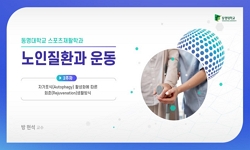Background The indications, benefits, and outcomes of percutaneous transluminal renal artery intervention (PTRI) remain controversial. The study purpose was to evaluate the long-term outcomes of PTRI in clinical practice. Methods A retrospective revie...
http://chineseinput.net/에서 pinyin(병음)방식으로 중국어를 변환할 수 있습니다.
변환된 중국어를 복사하여 사용하시면 됩니다.
- 中文 을 입력하시려면 zhongwen을 입력하시고 space를누르시면됩니다.
- 北京 을 입력하시려면 beijing을 입력하시고 space를 누르시면 됩니다.

Long-term outcomes of percutaneous transluminal renal artery intervention: a retrospective study at a single center
한글로보기https://www.riss.kr/link?id=A109167600
-
저자
Kang In Sook (-) ; Choi Donghoon (-) ; Ko Young-Guk (-) ; Shin Dong-Ho (-) ; Kim Jung-Sun (-) ; Kim Byeong-Keuk (-) ; Hong Myeong-Ki (-) ; Jang Yangsoo (-)
- 발행기관
- 학술지명
- 권호사항
-
발행연도
2024
-
작성언어
English
- 주제어
-
등재정보
KCI등재
-
자료형태
학술저널
-
수록면
21-21(1쪽)
- DOI식별코드
- 제공처
-
0
상세조회 -
0
다운로드
부가정보
다국어 초록 (Multilingual Abstract)
Methods A retrospective review of 217 subjects (254 renal arteries; mean age, 59.8 years) who underwent PTRI based on medical database.
Results The most common cause of renal artery stenosis was atherosclerosis in 217 (85.4%), followed by Takayasu arteritis (TA) in 23 (9.1%), fibromuscular dysplasia in five (2.0%) and others in nine (3.5%). Mean follow-up duration was 5.7±3.7 years. The first restenosis rate was 7.5% (n=19; highest in TA: n=9, 47.4%) and second restenosis occurred in six arteries (five TAs, one fibromuscular dysplasia). Follow-up blood pressure improved from 142.0/83.5 to 122.8/73.5 mmHg (P<0.001). There was no change within 5 years’ follow-up in estimated glomerular filtration rate (P=0.44), whereas TA changed from 69.8±20.5 to 84.2±17.9 mL/min/1.73 m² (P=0.008). Progressive renal dysfunction was related to diabetes mellitus, chronic kidney disease, and peripheral artery obstructive disease on multivariate analysis with hazard ratios (95% confidence intervals) of 2.24 (1.21–4.17), 2.54 (1.33–4.84), and 3.93 (1.97–7.82), respectively.
Conclusions PTRI was associated with a blood pressure reduction. Despite a higher rate of restenosis, patients with TA showed significant improvement in estimated glomerular filtration rate. Diabetes mellitus, chronic kidney disease, and peripheral artery obstructive disease were related with progressive renal dysfunction after PTRI.
Background The indications, benefits, and outcomes of percutaneous transluminal renal artery intervention (PTRI) remain controversial. The study purpose was to evaluate the long-term outcomes of PTRI in clinical practice.
Methods A retrospective review of 217 subjects (254 renal arteries; mean age, 59.8 years) who underwent PTRI based on medical database.
Results The most common cause of renal artery stenosis was atherosclerosis in 217 (85.4%), followed by Takayasu arteritis (TA) in 23 (9.1%), fibromuscular dysplasia in five (2.0%) and others in nine (3.5%). Mean follow-up duration was 5.7±3.7 years. The first restenosis rate was 7.5% (n=19; highest in TA: n=9, 47.4%) and second restenosis occurred in six arteries (five TAs, one fibromuscular dysplasia). Follow-up blood pressure improved from 142.0/83.5 to 122.8/73.5 mmHg (P<0.001). There was no change within 5 years’ follow-up in estimated glomerular filtration rate (P=0.44), whereas TA changed from 69.8±20.5 to 84.2±17.9 mL/min/1.73 m² (P=0.008). Progressive renal dysfunction was related to diabetes mellitus, chronic kidney disease, and peripheral artery obstructive disease on multivariate analysis with hazard ratios (95% confidence intervals) of 2.24 (1.21–4.17), 2.54 (1.33–4.84), and 3.93 (1.97–7.82), respectively.
Conclusions PTRI was associated with a blood pressure reduction. Despite a higher rate of restenosis, patients with TA showed significant improvement in estimated glomerular filtration rate. Diabetes mellitus, chronic kidney disease, and peripheral artery obstructive disease were related with progressive renal dysfunction after PTRI.
동일학술지(권/호) 다른 논문
-
Sex disparities in physical activity domains and hypertension prevalence
- 대한고혈압학회
- 조민정
- 2024
- KCI등재
-
Effect of low sodium and high potassium diet on lowering blood pressure and cardiovascular events
- 대한고혈압학회
- 김병식
- 2024
- KCI등재
-
- 대한고혈압학회
- Gupta Rajat Das
- 2024
- KCI등재
-
- 대한고혈압학회
- Mukunya David
- 2024
- KCI등재




 KCI
KCI



